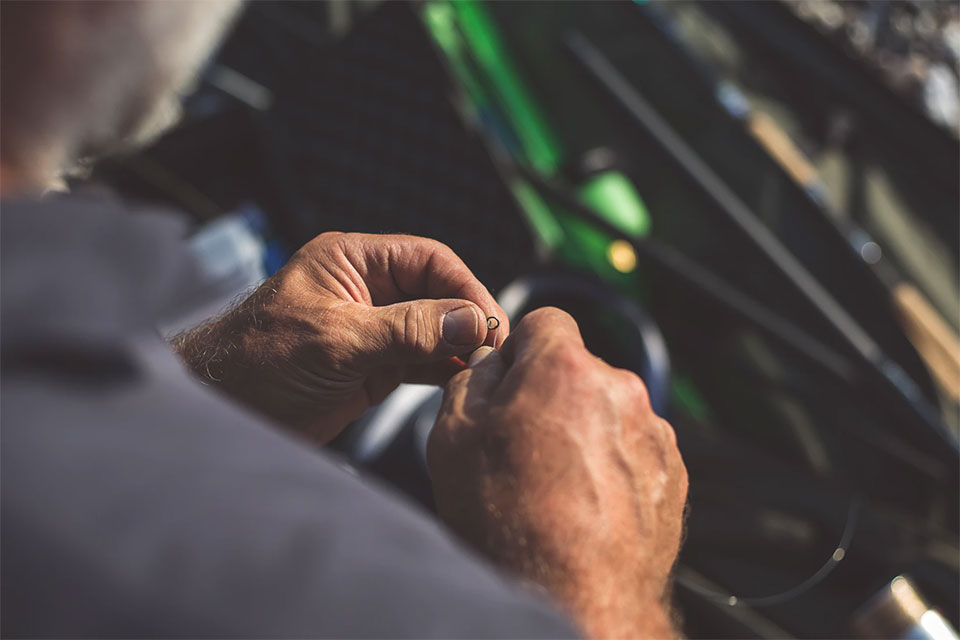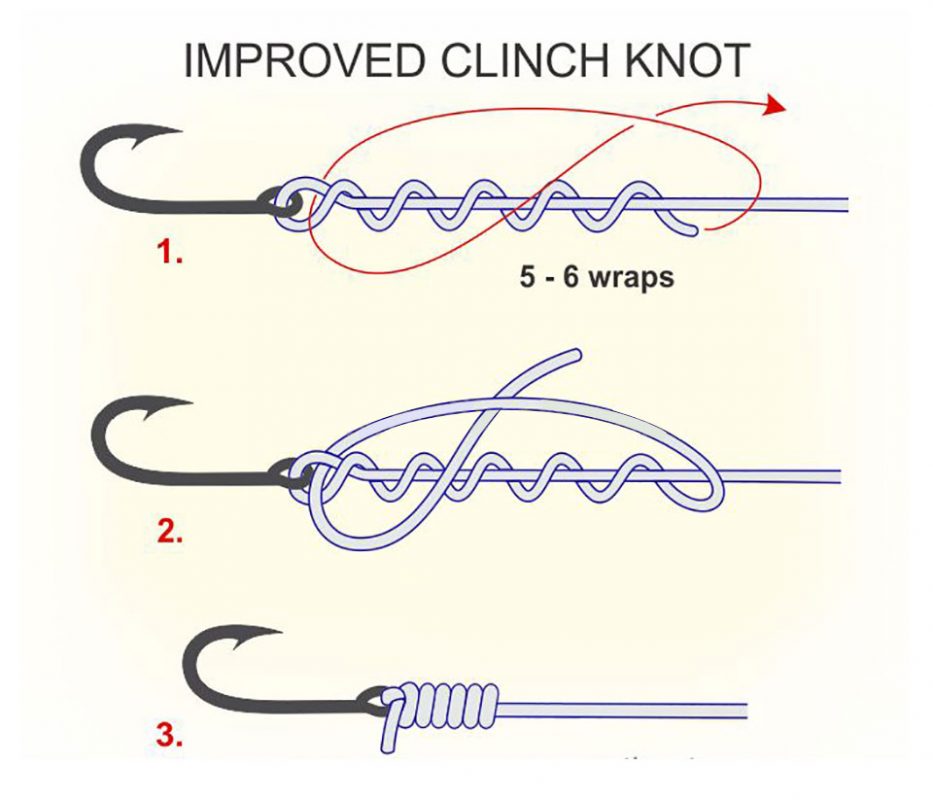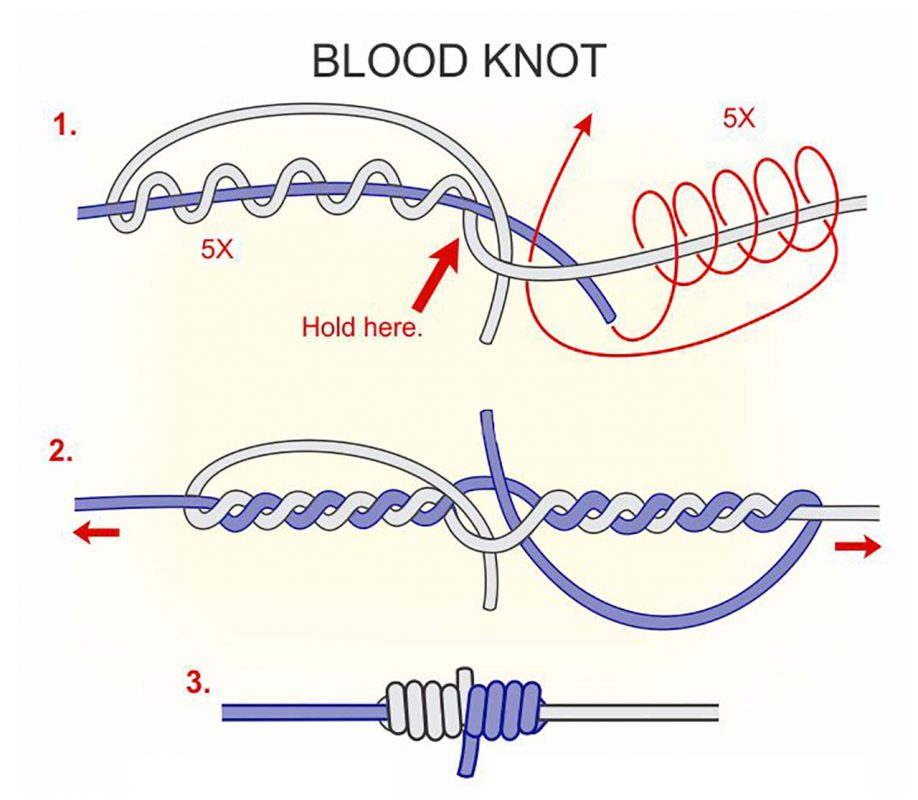2 Fishing Knots Every Angler Should Know
The first discovered knots used in fishing date back to 8,000 BC. It appears that knots have been a part of fishing since the beginning. Nothing can ruin a fishing trip like having the line break or the hook stripped off.1 In such cases, knowing only the overhand knot is simply not going to cut it. The best anglers go out onto the water prepared for some basic mishaps that can keep them from having to return to the shore and make a trip to a tackle shop.
Improved Cinch Knot
The improved Cinch knot is used by anglers and fly fisherman alike for tying the line to a hook.3 To start, feed the filament through the eye of the hook. Holding the end of the filament against the line, twist the hook in your fingers at least five times. This has the effect of creating five loops. Feed the end of the filament through the bottom loop and pull tight. Make sure the knot is tight, without any extra “loops” sticking out.
Blood Knot
Inevitably, your line is going to break once in a while, especially if you’re hauling in a monster catch. Getting the blood knot down so you can connect your line again and be sure that it will hold up under a fish with fight is essential. Lay the two ends of filament over each other with at least three inches of overlap. Wrap the first line around the second line five to seven times. Now do the same thing with the second line, wrapping it around the first. Bring both ends of line back through the loops, and pull tight.
Tips For Tying Knots
To make sure that the knot is actually secure, it is always advised to give a little tug on both ends of the filament, as some knots look secure, but actually come apart with a little pressure.4 Also, it is advisable to wet the line you are tying, as this adds a bit of useful friction to it, and ultimately makes it tighter. Finally, be sure to trim the excess line, as it could have the effect of scaring away fish.5 And no one wants that!
While there are many more knots out there to learn, these two simple knots are the place to start. They will save a world of trouble, and potentially money, in the future. Now, there’s no more having to buy expensive pre-leadered hooks or new reels of fishing line, and no worry of cutting your fishing day short because of broken lines.
Resources:
1. https://coastalanglermag.com/crossing-lines-a-guide-to-river-etiquette/, Ryan Wilson, 2019
2. https://www.nytimes.com/1983/06/13/sports/on-monofilament-line.html, New York Times, 1983
3. https://shopkarls.com/blog/bass-fishing-tips-9-basics-anglers/, Karl’s Bait and Tackle, 2019
4. https://www.riverranchboats.com/sailing-knots/, River Ranch Boats, 2019
5. https://www.sciencedaily.com/releases/2007/05/070514154055.htm, Science Daily, 2007


